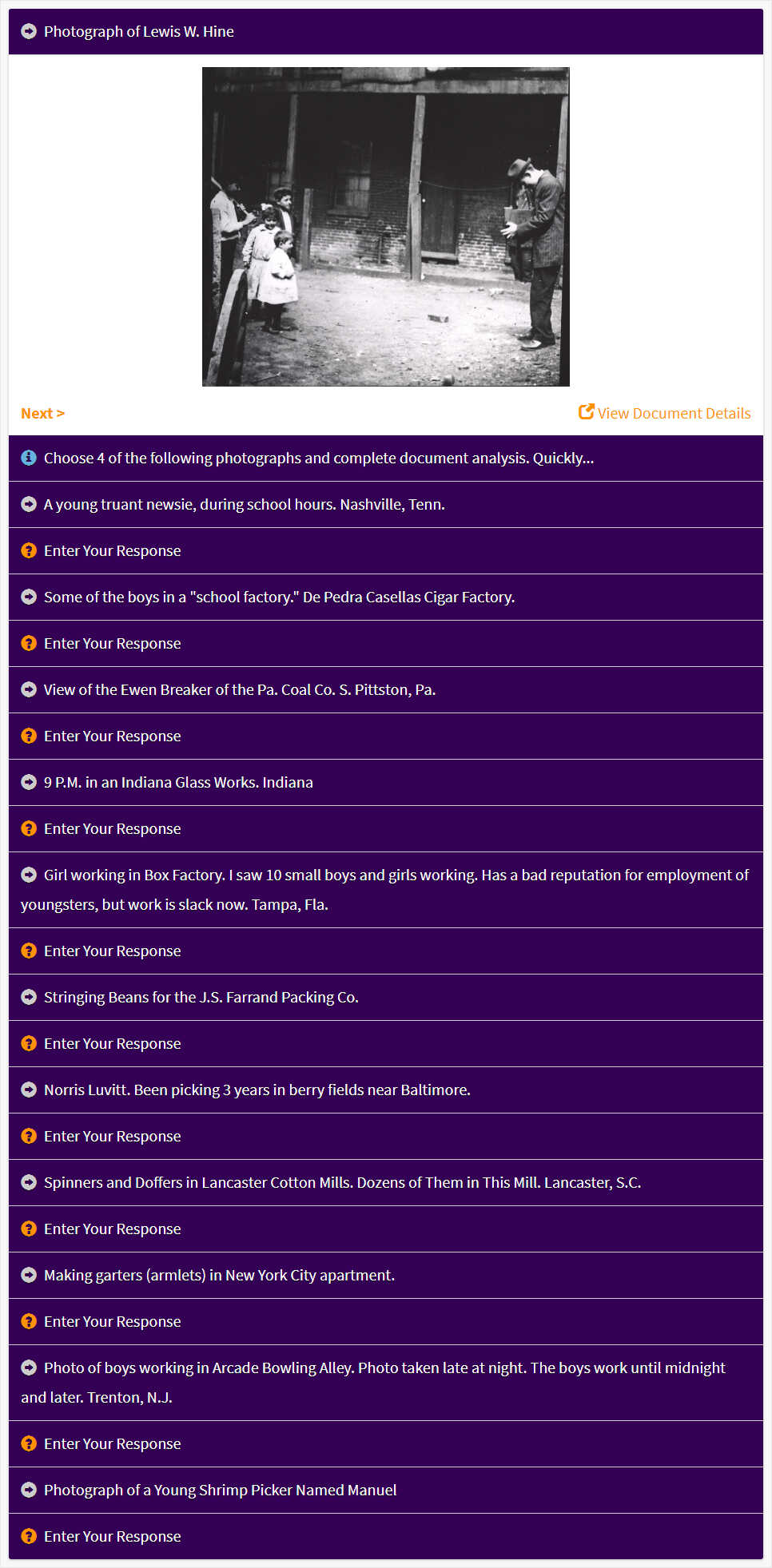Lewis Hine Shedding Light on Child Labor through Photographs
Making Connections

About this Activity
- Created by:National Archives Education Team
- Historical Era:The Emergence of Modern America (1890-1930)
- Thinking Skill:Historical Analysis & Interpretation
- Bloom's Taxonomy:Analyzing
- Grade Level:Middle School
In this activity, students will analyze a series of photographs taken by renowned photographer Lewis Hine to reflect on child labor in the early 20th century. The holdings of the National Archives include hundreds of photographs taken by Hine as part of his work for the National Child Labor Committee.
https://docsteach.org/activities/student/lewis-hine-shedding-light-on-child-labor-through-photographsDocuments in this activity
- Photograph of Lewis W. Hine
- 9 P.M. in an Indiana Glass Works. Indiana
- A young truant newsie, during school hours. Nashville, Tenn.
- Girl working in Box Factory. I saw 10 small boys and girls working. Has a bad reputation for employment of youngsters, but work is slack now. Tampa, Fla.
- Stringing Beans for the J.S. Farrand Packing Co.
- Making garters (armlets) in New York City apartment.
- Norris Luvitt. Been picking 3 years in berry fields near Baltimore.
- Photo of boys working in Arcade Bowling Alley. Photo taken late at night. The boys work until midnight and later. Trenton, N.J.
- Photograph of a Young Shrimp Picker Named Manuel
- Some of the boys in a 'school factory.'
- Spinners and doffers in Lancaster Cotton Mills.
- View of the Ewen Breaker of the Pa. Coal Co. S. Pittston, Pa.




